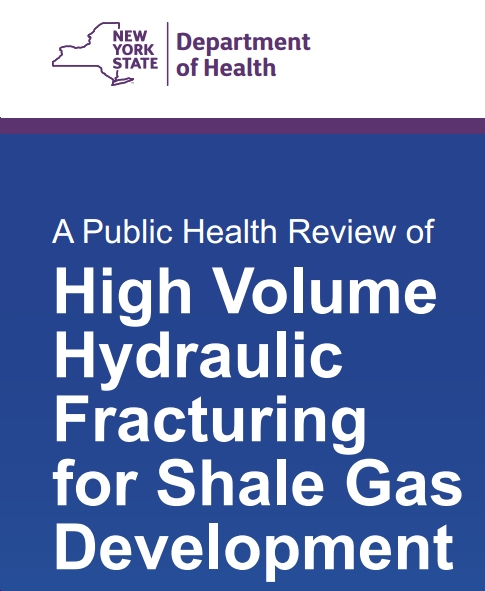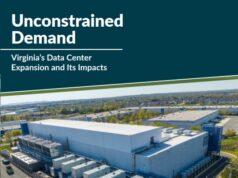I’m cross posting this from Scaling Green because I think it’s highly relevant to Virginia, where we’ve got several proposed natural gas pipelines, all of which would tap into “fracked” natural gas. Read the following and see if you’re comfortable with that. I know I’m not, nor was Gov. Andrew Cuomo of New York State — and for good reason!
 Over the years, we’ve talked a great deal about hydraulic fracturing, or “fracking,” on this blog. For instance, we’ve pointed out that fracking contaminates water supplies, pollutes the air, uses huge amounts of (increasingly scarce) water, releases the potent greenhouse gas methane, contaminates the soil, destroys forests and wildlife habitats, and even triggers earthquakes. We’ve also pointed out the gap between the facts of fracking and the industry’s “don’t-worry-be-happy” propaganda, while noting the lack of oversight by federal and state authorities, and even cases where government outright did the fracking industry’s bidding — at the public’s expense.
Over the years, we’ve talked a great deal about hydraulic fracturing, or “fracking,” on this blog. For instance, we’ve pointed out that fracking contaminates water supplies, pollutes the air, uses huge amounts of (increasingly scarce) water, releases the potent greenhouse gas methane, contaminates the soil, destroys forests and wildlife habitats, and even triggers earthquakes. We’ve also pointed out the gap between the facts of fracking and the industry’s “don’t-worry-be-happy” propaganda, while noting the lack of oversight by federal and state authorities, and even cases where government outright did the fracking industry’s bidding — at the public’s expense.
That’s why we were encouraged recently to see New York State move to ban fracking, citing threats to public health and other concerns. Media coverage of this decision varied in quality, with the Washington Post editorial page definitely falling into the “media fail” category (according to the Post’s flawed reasoning, New York state’s “outright ban is justified only by extreme caution”). In fact, if the Washington Post editorial board had actually read the report by the New York State Department of Health (see A Public Health Review of High Volume Hydraulic Fracturing for Shale Gas Development), they might not have made that argument.
In contrast to the Washington Post, we’ve taken some time to look at this thorough, rigorous report, and found it to be a powerful argument for why fracking is a serious risk — one we can and should do without. Key points from this lengthy (176-page) study include:
- There’s a great deal of uncertainty surrounding High Volume Hydraulic Fracturing (HVHF): “…the science surrounding HVHF activity is limited, only just beginning to emerge, and largely suggests only hypotheses about potential public health impacts that need further evaluation…However, the existing studies also raise substantial questions about whether the risks of HVHF activities are sufficiently understood so that they can be adequately managed…Review demonstrates that there are significant uncertainties about the kinds of adverse health outcomes that may be associated with HVHF, the likelihood of the occurrence of adverse health outcomes, and the effectiveness of some of the mitigation measures in reducing or preventing environmental impacts which could adversely affect public health.”
- Air Impacts of HVHF: “Studies provide evidence of uncontrolled methane leakage, emissions of other volatile organic chemicals, and particulate matter from well pads and natural-gas infrastructure. State authorities in both Texas and Pennsylvania have documented methane leakage from natural gas infrastructure by the use of infrared cameras. A recent West Virginia study also determined that heavy vehicle traffic and trucks idling at well pads were the likely sources of intermittently high dust and benzene concentrations, sometimes observed at distances of at least 625 feet from the center of the well pad…These emissions have the potential to contribute to community odor problems, respiratory health impacts such as asthma exacerbations, and longer-term climate change impacts from methane accumulation in the atmosphere “
- Water-quality impacts: “Studies have found evidence for underground migration of methane associated with faulty well construction…For example, a recent study identified groundwater contamination clusters that the authors determined were due to gas leakage from intermediate-depth strata through failures of annulus cement, faulty production casings, and underground gas well failure (Darrah, 2014). Shallow methanemigration has the potential to impact private drinking water wells, creating safety concerns due to explosions…Other studies suggest additional sources of potential water contamination, including surface spills and inadequate treatment and disposal of radioactive wastes…A recent review paper presented published data revealing evidence for stray gas contamination, surface water impacts, and the accumulation of radium isotopes in some disposal and spill sites…One recent study also suggests that chemical signals of brine from deep shale formations can potentially be detected in overlying groundwater aquifers…These contaminants have the potential to affect drinking water quality.”
- Seismic impacts: “Recent evidence from studies in Ohio and Oklahoma suggest that HVHF can contribute to the induction of earthquakes during fracturing…Although the potential public health consequence of these relatively mild earthquakes is unknown, this evidence raises new concerns about this potential HVHF impact.”
- Community impacts: There are numerous historical examples of the negative impact of rapid and concentrated increases in extractive resource development (e.g., energy, precious metals) resulting in indirect community impacts such as interference with quality-of-life (e.g., noise, odors), overburdened transportation and health infrastructure, and disproportionate increases in social problems, particularly in small isolated rural communities where local governments and infrastructure tend to be unprepared for rapid changes…Similar concerns have been raised in some communities where HVHF activity has increased rapidly.”
- Health impacts: “One peer-reviewed study and one university report have presented data indicating statistical associations between some birth outcomes (low birth weight and some congenital defects) and residential proximity of the mother to well pads during pregnancy…Proximity to higher-density HVHF well pad development was associated with increased incidence of congenital heart defects and neural-tube defects in one of the studies…Several published reports present data from surveys of health complaints among residents living near HVHF activities. Commonly reported symptoms include skin rash or irritation, nausea or vomiting, abdominal pain, breathing difficulties or cough, nosebleeds, anxiety/stress, headache, dizziness, eye irritation, and throat irritation in people and farm animals within proximity to HVHF natural gas development.”
- Bottom line: “…the relationships between HVHF environmental impacts and public health are complex and not fully understood. Comprehensive, longterm studies, and in particular longitudinal studies, that could contribute to the understanding of those relationships are either not yet completed or have yet to be initiated…While a guarantee of absolute safety is not possible, an assessment of the risk to public health must be supported by adequate scientific information to determine with confidence that the overall risk is sufficiently low to justify proceeding with HVHF in New York. The current scientific information is insufficient. Furthermore, it is clear from the existing literature and experience that HVHF activity has resulted in environmental impacts that are potentially adverse to public health. Until the science provides sufficient information to determine the level of risk to public health from HVHF and whether the risks can be adequately managed, HVHF should not proceed in New York State.”
In sum, we know that natural gas fracking is harmful and dangerous in a variety of ways, we’re just not sure exactly how harmful it is. Meanwhile, we know that clean energy – solar, wind, energy efficiency, etc. – is safe and economical. Which is why the argument that we should stick with natural gas (as “bridge fuel” or whatever), while shortchanging clean energy, makes no sense whatsoever.













